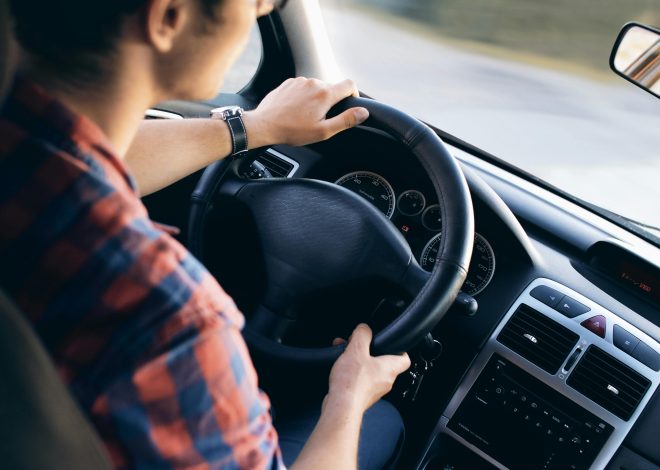
How to Drive Safely in Heavy Rain
Introduction
Driving in heavy rain presents unique challenges—reduced visibility, slick roads, and the risk of hydroplaning. Whether you’re commuting to work or heading out on a road trip, understanding how to handle wet conditions can keep you and your passengers safe. In this post, we’ll cover essential preparations before you hit the road, in-car techniques to maintain control, and what to avoid while driving in heavy downpours. Follow these steps to minimize risk and arrive at your destination safely, even when raindrops are pelting your windshield.
1. Prepare Before You Head Out
1.1 Check Your Vehicle’s Condition
- Tire Tread and Pressure
- Ensure your tires have at least 4/32″ of tread depth. Worn tires lose grip more quickly on wet pavement.
- Inflate tires to the manufacturer’s recommended pressure (found on the driver’s door jamb or owner’s manual). Properly inflated tires evacuate water more effectively.
- Windshield Wipers and Washer Fluid
- Replace wiper blades at least once a year, or if they streak or squeak.
- Fill the washer reservoir with a cleaning solution that won’t freeze in colder temperatures.
- Headlights and Taillights
- Test all exterior lights—low beams, high beams, fog lights (if equipped), brake lights, and turn signals.
- Clean lens covers to remove dirt or oxidation that could reduce brightness.
- Brakes and Brake Fluid
- Have your mechanic inspect brake pads and rotors to ensure they respond promptly.
- Check brake fluid level and top off if needed; fresh fluid helps maintain hydraulic pressure in wet conditions.

1.2 Plan Your Route and Timing
- Avoid Flooded Roads
- Check local traffic apps or news for road closures and flood alerts. Never attempt to drive through water of unknown depth—it can stall your engine or sweep your vehicle away.
- Allow Extra Travel Time
- Wet roads increase stopping distances. Build in 20–30 percent more time to reach your destination.
- Choose Well-Lit, Main Roads When Possible
- Major roads are usually better maintained and drain more effectively than side streets.
2. Adjust Your Driving Technique
2.1 Reduce Speed and Increase Following Distance
- Slow Down
- Wet pavement reduces traction by up to 50 percent. Dropping 5–10 mph below the posted limit can significantly improve control.
- Leave More Space
- In dry conditions, you might follow a car by 3 seconds. In heavy rain, extend that to 5–6 seconds or more, giving you extra time to react if the vehicle ahead brakes suddenly.
2.2 Use Headlights Properly
- Low Beams Over High Beams
- High beams reflect off the rain and reduce visibility. Low beams penetrate the rainfall better and help other drivers see you.
- Turn on Daytime Running Lights or Fog Lights
- If your vehicle has DRLs or dedicated fog lights, activate them to improve your visibility to oncoming traffic.
2.3 Avoid Hard Braking and Sharp Steering
- Gentle Braking
- Brake gradually to avoid locking wheels, which increases the risk of skidding. If your vehicle has ABS (anti-lock brakes), apply steady pressure—ABS will pulse the brakes to keep tires from locking.
- Smooth Steering Inputs
- Make gradual steering corrections—jerky or quick turns can unsettle your vehicle on a slick surface.
2.4 Watch for and Prevent Hydroplaning
- Recognize Hydroplaning Signs
- If the steering feels light and unresponsive, your tires may have lost contact with the road surface. Engine revs may drop slightly, and the vehicle drifts straight.
- How to Recover
- Lift your foot off the accelerator.
- Keep the steering wheel straight—do not make sudden turns.
- Gently brake once your wheels regain traction (if your vehicle has ABS, continue to press the pedal).
- Prevent Hydroplaning
- Stay in the tracks created by a vehicle ahead; the water layer is thinner there.
- Avoid standing water puddles—drive around them if safe.
- Keep speeds at or below posted limits, especially in heavy rain.
2.5 Use Defoggers and Air Conditioning for Clear Visibility
- Defrost/Defog Settings
- Set climate control to “defog” or “defrost.” This directs warm, dry air onto the windshield to clear condensation.
- Air Conditioning
- Running A/C removes humidity from the cabin air, preventing windows from fogging. If it’s too cold, use “A/C off” but ensure air is directed at the windshield.

3. Utilize Safety Features Effectively
3.1 Anti-Lock Braking System (ABS)
- Understand How ABS Works
- If wheels start to lock under heavy braking, ABS pulses the brakes to maintain traction.
- You may feel a pulsation in the brake pedal—this is normal. Maintain firm, steady pressure.
3.2 Electronic Stability Control (ESC)
- Activate ESC
- Most modern vehicles have ESC enabled by default. It helps prevent skids by selectively applying brakes to individual wheels when it detects a loss of control.
- Trust the System
- If you begin to skid, trust that ESC will intervene and maintain directional stability as long as you steer gently and avoid abrupt inputs.
3.3 Traction Control System (TCS)
- Function
- TCS reduces engine power or applies brakes to wheels that slip during acceleration. In heavy rain, traction control can help keep you moving forward on slick patches.
- Leave It On
- Only turn off traction control if you need to rock yourself out of deep water or very loose, soft surfaces; otherwise, let it operate.
4. Know What to Avoid While Driving in Heavy Rain
4.1 Don’t Follow Too Closely
- Risk of Rear-End Collisions
- Braking distances can double on wet roads. Maintain ample space.
4.2 Avoid Cruise Control
- Why?
- Cruise control can make it harder to adjust speed quickly when traction changes suddenly. You want direct control over acceleration and deceleration.

4.3 Steer Clear of Deep Water or Flooded Roadways
- Never Guess Depth
- Water that looks shallow can be deeper than it appears. Even 6–12 inches of moving water can sweep a car away.
- Find an Alternate Route
- Turn around and seek a safer path. It’s not worth risking engine damage or being stranded.
4.4 Do Not Slam on the Brakes
- Skidding Risk
- Sudden braking can lock up wheels (if you don’t have ABS) and cause you to lose control.
4.5 Avoid Driving at Night, If Possible
- Limited Visibility
- Darkness compounds the scattering of light from rain. If you can delay travel until visibility improves, do so.
5. Maintain Awareness of Surroundings
5.1 Watch for Pedestrians and Cyclists
- Reduced Visibility
- Rain and spray can obscure pedestrians, cyclists, or motorcyclists. Scan sidewalks and shoulders carefully, and be prepared to yield.
5.2 Look for Road Debris
- Fallen Branches or Objects
- Heavy rain and wind can usher debris onto the road. Slow down and give yourself room to maneuver around obstacles.
5.3 Use Turn Signals Early
- Communicate Intentions
- In poor visibility, give other drivers ample notice before changing lanes or turning. Signal well in advance—3–5 seconds sooner than you would in clear weather.
6. Responding to Emergencies
6.1 If You Begin to Hydroplane
- Stay Calm and Don’t Slam on Brakes
- Ease Off the Accelerator
- Keep Steering Wheel Straight
- Brake Gently Once Traction Returns
6.2 If Your Car Stalls in Standing Water
- Don’t Try to Restart Immediately
- Water can enter the engine, causing severe damage.
- Exit Safely
- If it’s safe, climb out and move to higher ground or call for a tow.
6.3 If Visibility Drops to Zero
- Pull Over Safely
- Turn on hazard lights, pull off the road as far as possible, and wait for conditions to improve.
- Stay Seated
- Keep seatbelt fastened and remain inside with hazards on—avoid walking along a busy roadway in heavy rain.

7. After the Rain Stops
7.1 Check for Damage
- Inspect Tires
- Look for embedded debris (glass, nails) or cuts from skidding over potholes filled with water.
- Ensure Lights Are Working
- Heavy rain may have blown off lens covers or caused short-circuit issues.
7.2 Clean Your Windshield and Wiper Blades
- Remove Grime
- Rain often mixes with road oil and dirt, leaving a film that reduces visibility the next time you drive.
- Replace Wipers If Needed
- If streaks return quickly, swap out old rubber blades for new ones.
7.3 Consider a Wheel Alignment Check
- Pothole Damage
- Hidden potholes, softened by rain, can bend rims or knock wheels out of alignment. A quick post-rain alignment check can prevent uneven tire wear.
Conclusion
Driving in heavy rain requires extra caution, slower speeds, and focused attention to your vehicle’s handling. Before you leave, make sure tires, brakes, and wipers are in good condition, plan a route that avoids flooded roads, and allow extra travel time. While on the road, reduce speed, increase following distance, use low beam headlights, and avoid sudden steering or braking inputs. Trust your car’s ABS, ESC, and traction control systems to help maintain stability, but stay alert for standing water, debris, and reduced visibility. If conditions become too dangerous, pull over safely with hazards on and wait it out. By following these steps—and remembering to check your vehicle for damage once the rain has stopped—you’ll greatly reduce your risk and ensure that you arrive safely, even when the weather turns gray and wet.



